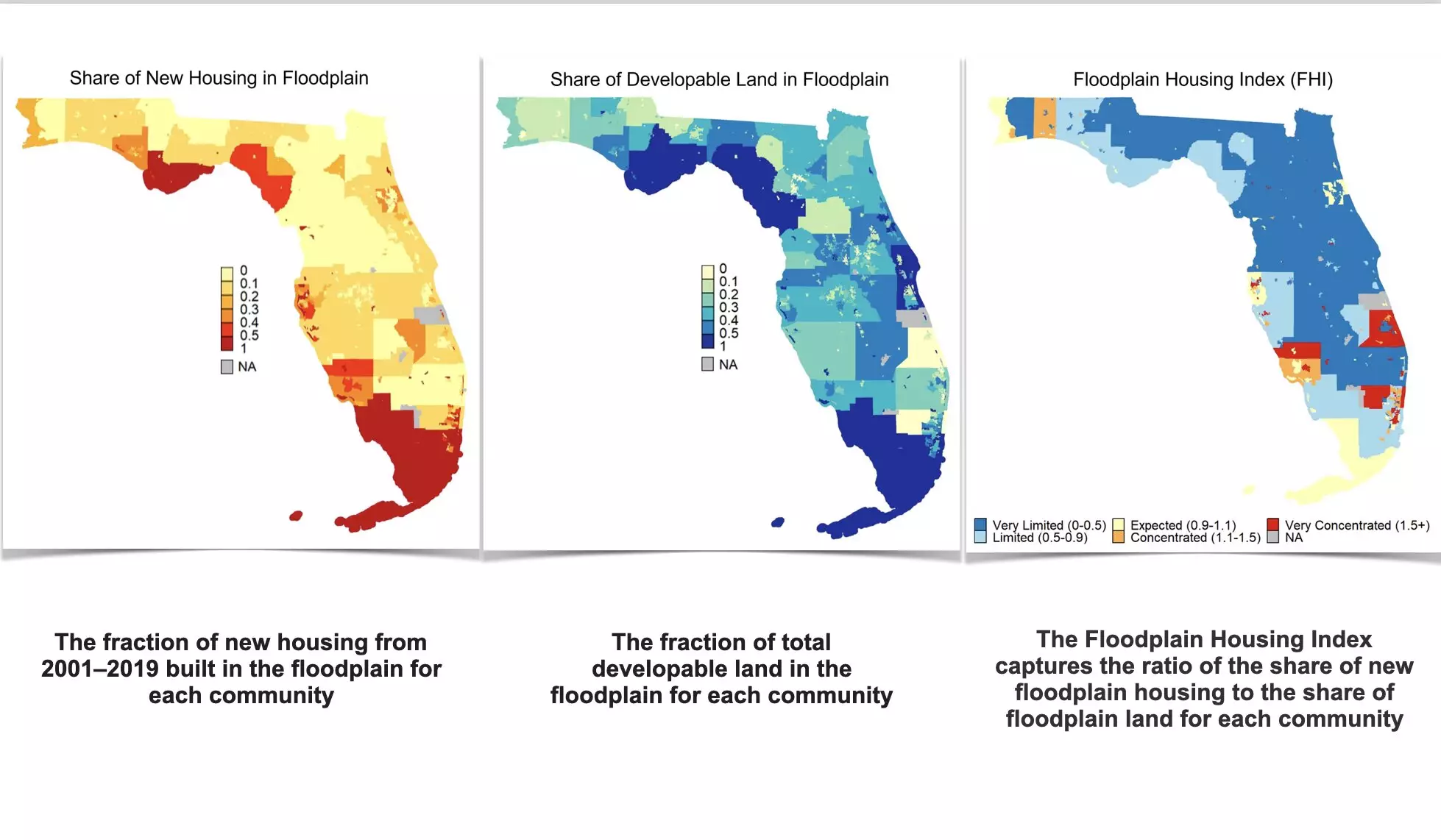Recent evaluations of how communities in the United States are developing floodplain areas reveal alarming trends that could threaten public safety. A comprehensive investigation from the University of Miami’s Rosenstiel School of Marine, Atmospheric, and Earth Science indicates that more than two million acres of floodplain have been developed in the past twenty years. Florida emerges as a focal point in this analysis, accounting for nearly half of all new floodplain housing. Such findings shine a light on the complexities and risks associated with housing in flood-prone regions, particularly in the Southeastern U.S., where flooding is a common occurrence.
The research underscores a significant increase in residential properties constructed in floodplains, with over 840,000 new housing units documented nationwide. Of these, around 398,000—constituting approximately 21% of all housing built in Florida—were established in flood-prone areas. What raises eyebrows is the researchers’ observation that these figures fall short of expectations. Lead author Armen Agopian noted that if housing development reflected the proportion of floodplain land available, approximately 40% of all new housing in Florida would be situated in these vulnerable zones. This discrepancy prompts a deeper inquiry into why such uneven growth patterns exist and whether local policies truly mitigate risks.
A significant portion of the analysis focused on regulatory environments in various communities. The study found that 74% of communities across the country impose restrictions on new development in flood-prone areas, while 87% practice similar limitations on new housing constructions. Interestingly, coastal communities exhibited a propensity for concentrating new developments in floodplains more than their inland counterparts. This raises questions about the rationale behind such decisions, whether economic incentives or lack of understanding of flood risks play a role.
One notable finding is the relationship between community participation in FEMA’s Community Rating System (CRS) and the likelihood of floodplain development. Communities engaged in this program—the aim being to foster better flood management practices through incentives like reduced insurance rates—do show a trend toward increased floodplain development. However, as Agopian points out, mere participation is insufficient; sustainable floodplain management practices must accompany it to effectively reduce risk.
The implications of increased floodplain development are profound. More construction in these areas amplifies risks, leading to heightened infrastructure vulnerability and greater potential for environmental damage during floods. Additionally, the study challenges the prevailing narrative that focuses primarily on communities suffering from major flood events. Instead, it highlights the proactive measures taken by some communities that have successfully avoided floodplain development, thus mitigating the potential for future disasters.
These precautionary approaches deserve recognition, as they provide valuable lessons for other regions grappling with similar flood-related challenges. “We can learn from communities that have managed to steer clear of problematic floodplain development and have engaged in smart land-use planning strategies from the outset,” says senior author Katharine Mach. Her emphasis on learning from these ‘unsung heroes’ underscores the importance of sharing best practices in community planning.
The nationwide analysis on floodplain development conducted by the University of Miami serves as a wake-up call. As urbanization continues to encroach on flood-risk zones, the stakes for vulnerable communities rise. While it is encouraging that many areas have adopted regulations to limit new developments, the engagement of these practices in the face of growing economic pressures remains crucial. To navigate the challenges posed by climate change and flooding, communities must prioritize sustainable development strategies and learn from those successfully avoiding floodplain risks. The interplay between land use, community policy, and environmental safety will be critical in shaping the future resilience of neighborhoods across the United States.


Leave a Reply